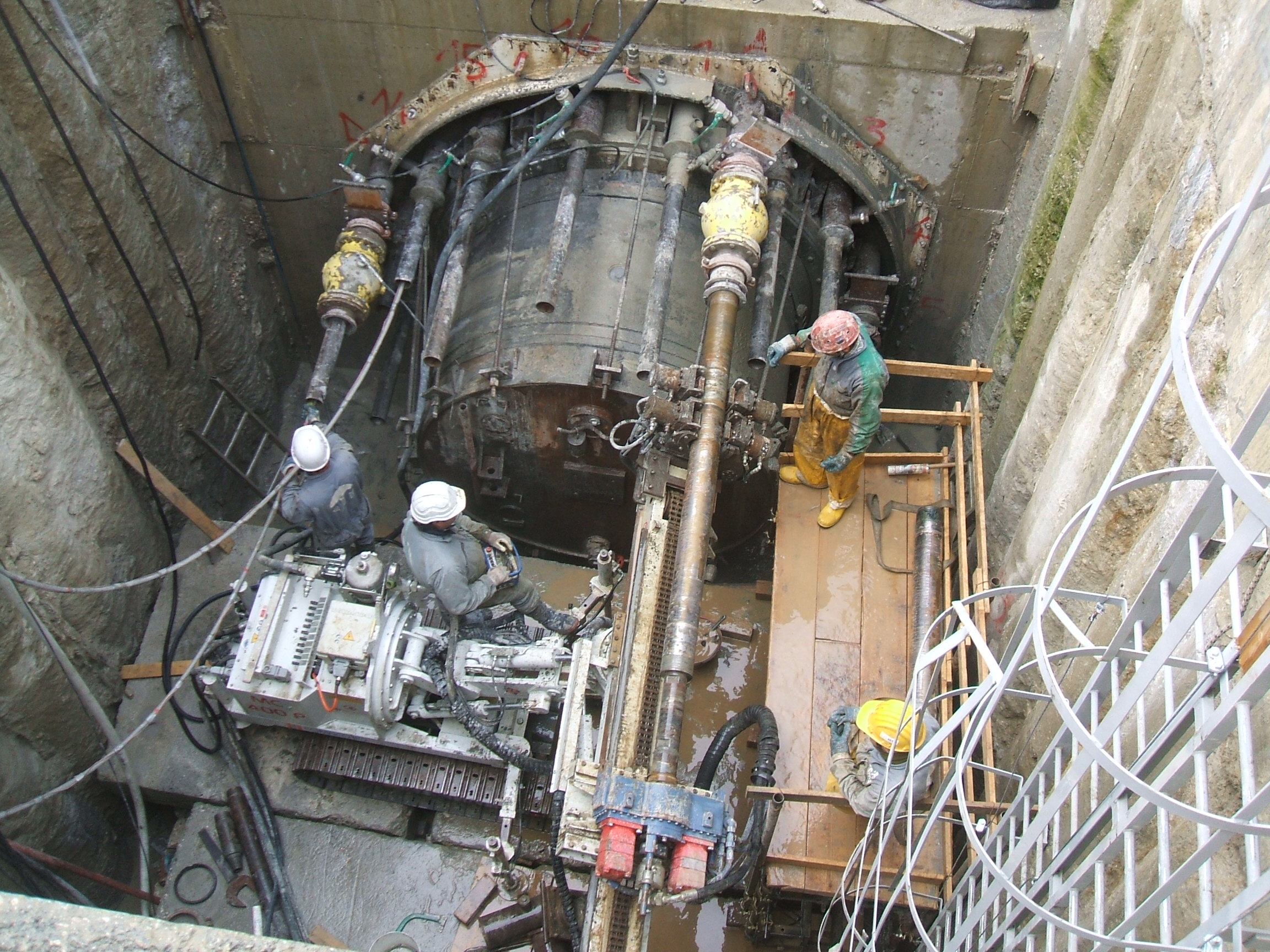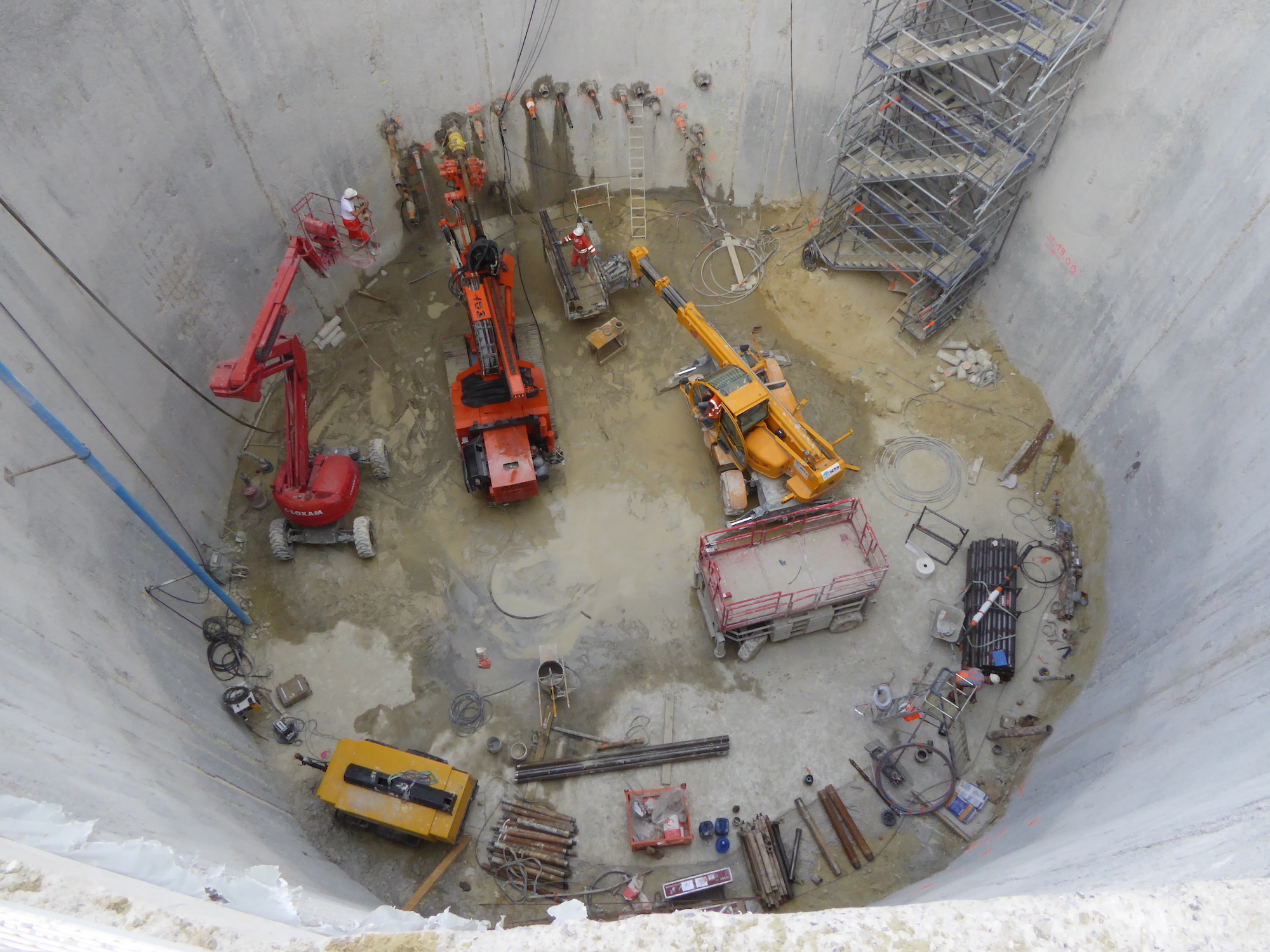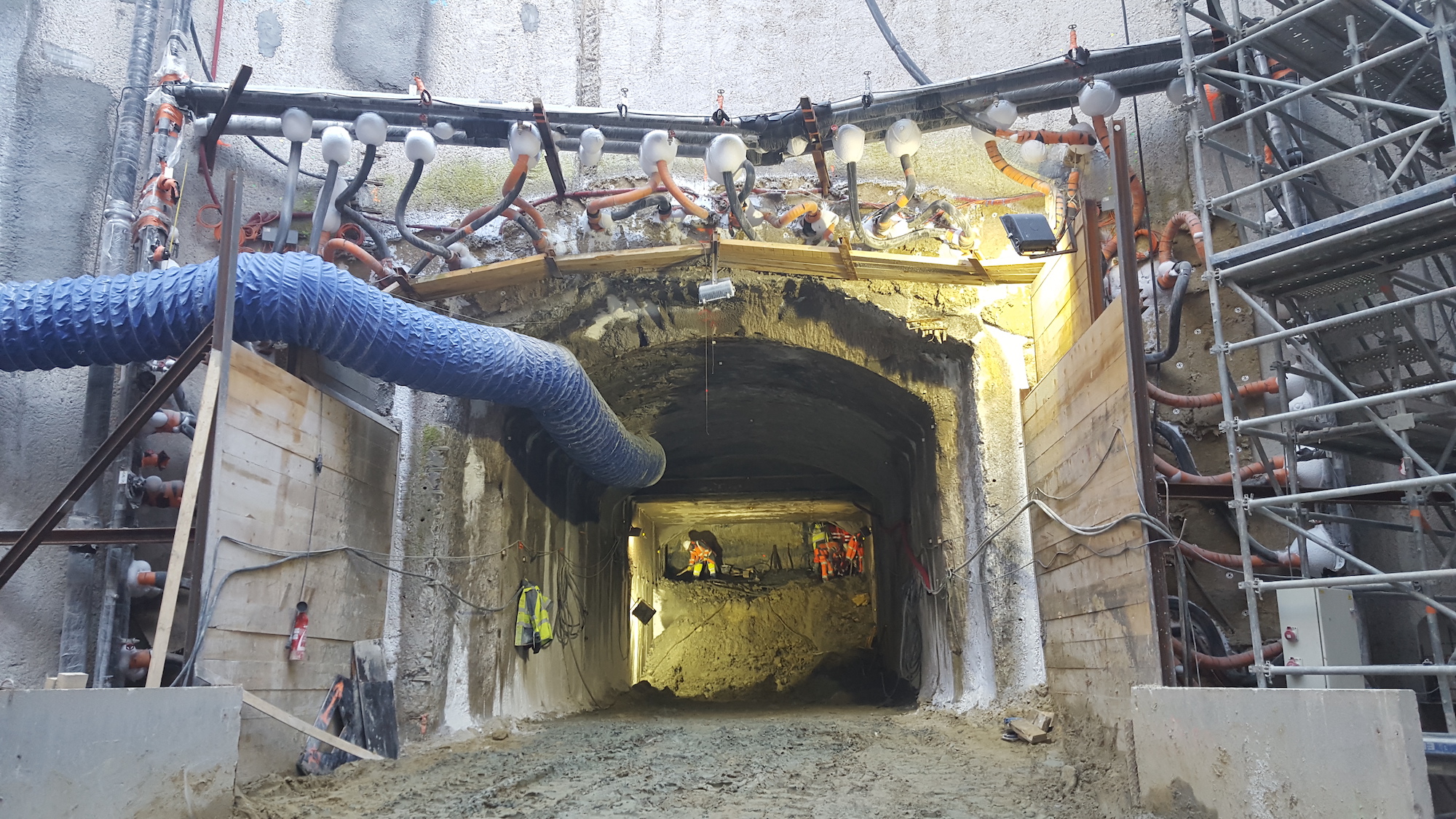This method is used for drilling wells, building tunnel headings, barrages and walls. In the area to be treated, freeze pipes are placed at a fixed distance between centres to allow a reciprocal interpenetration of columns and, subsequently, create a continuous frozen wall. The temperature of soil is conventionally and safely lowered, until it reaches a value of at least -10° C at a distance of 50 cm from the core of the pipe, and is then kept at that value for the whole working period.
The freezing process is carried out using cooling systems which allows the continuous circulation of calcium chloride at -35° C in appropriate tubes preinstalled in the ground. Alternatively, liquid nitrogen is injected in the tubes and then exhausted to atmosphere in gaseous form. The extremely low temperature (-190°) causes a quick and efficient freezing, and this condition is then maintained by means of refrigeration systems. Generally, this latter method is only used for short periods or for the sole cooling activation.






